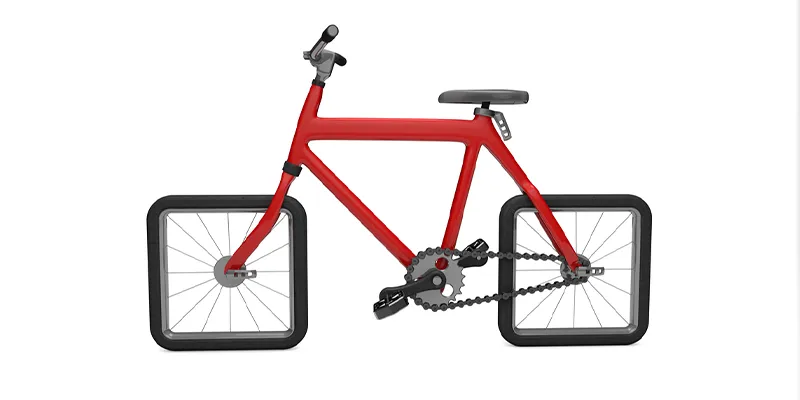What’s in a name: The journey of arriving at the right name for a startup
A great brand name can just be the most powerful asset in starting up what can be a grand new story in the marketplace.
In the modern-day marketplace, brand names are a matter of critical importance. For any entrepreneurs wishing to get off the blocks with great momentum, the impetus of a powerful name can literally ‘start up’ the fortunes of that organization.
However, this exercise of name creation often is not given the due consideration that it deserves. Frequently, there is a rush to register some kind of name for legal purposes to get things going. That name, usually a ‘quick fix’, then hangs over the company for decades to come, much like the aftermath of a bad relationship, something Shakespeare’s two famous lovers might know something of.
Make no mistake, finding the right name is a strategic imperative of the utmost importance and quite simply everything flows from there. Along those lines, here are a few thinking avenues founders and brand custodians might find worth exploring. This intervention is best conducted with a spirit of play and exploration, and perhaps that is why it’s called the name game.

Capturing the raison d’etre
Startups come into the world, because the founders usually uncover a compelling purpose. They find a problem they can help solve, discover an avenue where they can make a difference or uncover a lucrative conversational handle to engage the consumer. This provides the driving motivation for the organization to overcome its hurdles, and to attract the right people towards it-both customers and investors.
Which is why a name which starts from the core philosophy that brought the company into existence, is a powerful route to take. It becomes the ultimate rallying call for the internal faithful, and a beacon to the market at large.
In recent years, Paper Boat provides a fascinating Indian example of this thinking at work. A company which sought to recapture long forgotten tastes from childhood, created an arena for an entire range of products to operate in, by anchoring its proposition around nostalgia. All powered by an interesting nomenclature, which harkened back to more innocent times.
Of course—in many ways—the necessity of philosophy taking centre stage in corporate strategy was first was seeded by Apple. Born in an environment where the growing perception was that advancing technology would threaten human individuality, this brand name coinage was meant to cue one of the first acts of rebellion of mankind (referencing the story of Adam & Eve).
It also made the brand seem warm and friendly, in increasingly cold and seemingly ‘mechanical’ environment. As many would concur, it’s an approach which has borne fruit over the years.

Building from the emotions kindled
A product succeeds only when it is able to elicit the right kind of emotional response in audiences. Contrary to the black and white realities captured in dry profit and loss statements, startups often thrust ahead based on the vibrant feelings and colours its offerings create in the grey areas of human consciousness. Trying to arrive at the right kind of name could be something to get highly emotional about.
This offers a fertile ground for nomenclature. There are overt emotional badges which the brand might appropriate, like Joy Ice Creams, which points towards the delight in consuming the product. Then, consider the emotional relief which Yes Bank tries to leverage on, especially when contextualized against the “no” one is habituated to hearing in the sector. Even the right people or places used as names could trigger powerful feelings.
Tesla implies connotations of genius and futuristic thinking. Patanjali transports one back to the purity and spirituality of Yogic times. When it comes to places, Patagonia points to the stunningly pristine environs the brand seeks to protect. Whilst Monte Carlo, encourages perceptions of romance and style. As can be seen, riding on the right emotion could set the brand story in motion.

Making ‘sound’ decisions
Brands are all about making sensorial connections with its customers. The ring of a brand name, or how it sounds off the tongue, can be such an important aspect. In these days of word of mouth and viral marketing, it is imperative the brand can be heard in the right light, or can come across as acoustically aesthetic in a WhatsApp conversation.
Phonetics are becoming increasingly important in the development of a brand’s persona, and the first step begins with the name it goes by. Aural stimuli is very potent when it comes to creating the right perceptions, and the right name to hear could just push the start-up story that extra year.
Developing ideas along these lines could begin with using the power of alliteration, and its capacity to create earworms. Coca-Cola and Kit Kat are legendary examples, of using the sharpness of the ‘K’ sound, to help the brand make its voice heard across the clutter. But this stream of thought can also be explored in terms of getting the brand to sound more premium, even boost its expert credentials.
Reflect on how an Indian company-Mirc Electronics-tapped into the equity of a Japanese sounding name, when they named their brand Onida.

Amalgamating different concepts
This is an era where users typically have more than one interface window open. That implies there is a deep-seated bias for merging things together, somewhere at work beyond consciousness. Synthesis is becoming a cultural constant, as even seen in modern day music. Hit songs rarely stay within the confines of one genre, often breaking in to fuse with the notes of an entirely different one.
Hence, amalgamating different ideas or relevant words, can serve to create powerful brand names. This is something which has been an integral concept in engineering India’s cultural fabric. After all, where else in the world is one likely a sample a Chinese Masala Dosa?
Mixing and matching words can often prove to be productive, when it comes to brand name generation. Take Meesho, for instance, which represents a trendy customization of ‘meri eshop’ (my online shop). Even adding only one letter to a regular word, which they did by adding the ‘Z’ of zing to tomato, led to the truly appetizing nomenclature of Zomato-the online food delivery service.
Think of the urgency explicit in grabbing the right shopping offer as announced by Snapdeal. Look at how the ability of paying through one’s mobile, was succinctly captured in Paytm-something which revolutionized online payments in the country. In fact, a lot of Indian unicorns seem to have recently adopted this naming strategy.

Opening the door to randomness
After all is said and done, brand nomenclature is eventually a creative exercise. And when it comes to creativity, things must be taken up with a spirit of play. The intrusion of outside influences, the detour into the unrelated, the dabbling with seeming ‘nonsense,’ all must be encouraged.
People should be allowed to truly give their imagination wings. Lateral explorations of names can often come up with unexpected answers. It is important to use one’s instinct and intuition to react at such times, rather than pursue matters with a strictly logical mindset. It is often the faith of the core team backing it, even if it might seem strange or irreverent (even irrelevant) to outsiders, which usually helps the name make a name for itself.
More names come from this approach than people care to admit. Some even get back fitted with much logic, if the name starts becoming popular. Warby Parker-the American online eyewear retailer, comes from two-character names the founder thought interesting whilst browsing through a Jack Kerouac journal. George Eastman invented the Kodak name, in his quest for something short and catchy that people would remember. It is fair to say that name clicked.
Pepperfry-a furniture and home products portal-chose its name wanting to be Indian, fun, and honest. It certainly has helped the company stand out in a space, where people tend to expect more staid and sober tones. The thing about dabbling with nonsense, is if one is patient enough, there comes a magic moment where the ‘non-’ part of that word falls off.
There are many other ways to come up with memorable brand names for one’s start-up offering. The primary idea is to show, there can, and always should, be a method to the madness. Brand names are too important to be cursorily arrived at, without serious contemplation.
They demand the time and attention of all key think tank members. Because a great brand name can just be the most powerful asset in starting up what can be a grand new story in the marketplace.












